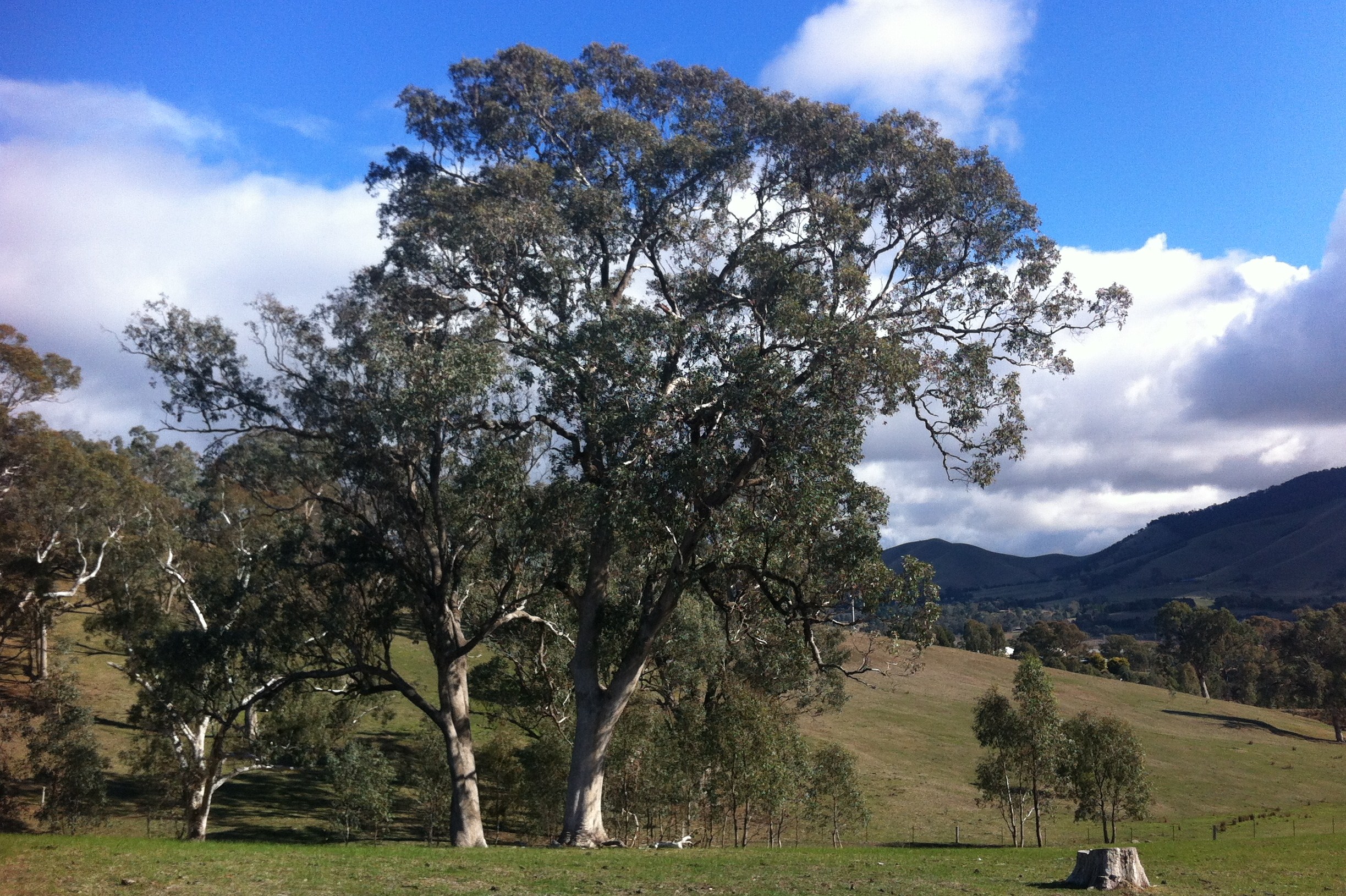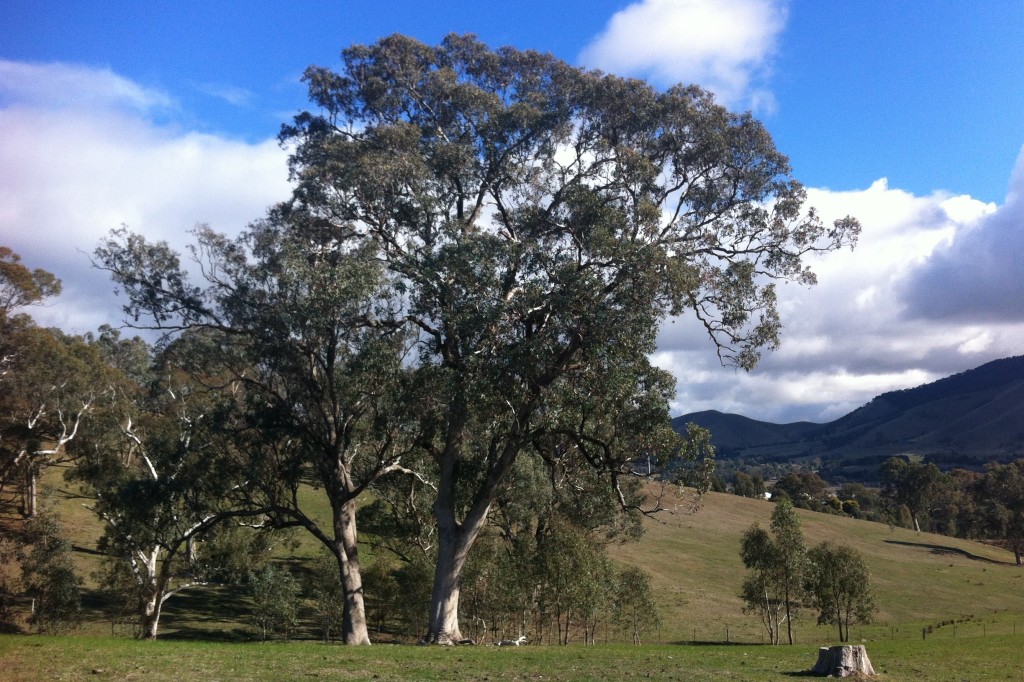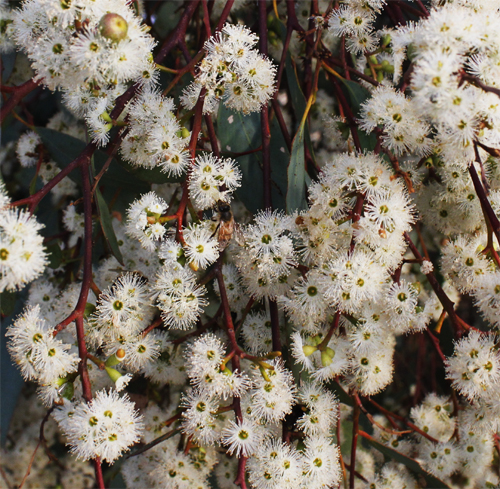Description
Common names
Grey Box, Western Grey Box, Gum-topped Box, Black Box, Box, Brown Box, Green-leaved Box, Gum Topped Box, Inland Box, Inland Grey Box, Narrow Leaved Box, Narrow-leaved Box, Narrow-leaved Grey Box, Southern Grey Box.
Scientific names
Eucalyptus microcarpa.
Family
Myrtaceae.
Genus
Eucalyptus.
Name origin
Microcarpa, from Greek micros, small, and carpos, fruit, referring to small fruit.
Rainfall
450mm.
Growth rate
Moderate.
Growth height
Up to 25m.
Presence in Australia
Widespread west of the Hume Highway on lower slopes and plains country.
This specie has been identified in the following Australian states: Qld, NSW, ACT, Vic, SA.
Habitat
Grassy woodland on moderately fertile loamy soils.
Habit
Tree to 25m high. Open crown of dull olive-green leaves. Grey, fibrous-flaky "box" bark with whitish patches, upper branches smooth-barked.
Similar species
Often confused with White Box (E. albens). Grey Box has greener and narrower leaves than White Box, and smaller buds and fruit.
Site preference
Heavy loamy soils. Tolerates moderately alkaline soil, frost, wind, infrequent flooding and extended dry periods.
Characteristics
Long-lived. Moderate growth rate.
Flowering
White, Feb-Jun. Flowers freely each year.
Seed collection
Throughout year, as seeds generally retained. Good crops may be irregular.
Propagation
From seed (±729 seeds per gram).
Regeneration
From seed, particularly in absence of competitive exotic grasses or weeds, during wet summers. Coppices vigorously from low stumps, and regrowth is long-lived. Establishes well when direct seeded.
Shade and shelter
Useful medium-level cover in windbreaks. Good shade due to spreading crown.
Land protection
Useful in gully erosion control behind fibrous-rooted understorey species.
Fuel
Very good.
Timber
Pale, very durable, tough and strong. Density about 1100 kg/m3. Used for posts, poles, fencing and heavy construction. Interesting furniture timber, although difficult to work.
Wildlife
Excellent habitat. Flowers are a food source for Sugar Gliders, Squirrel Gliders, native birds and insects. Insect-eating birds attracted. Hollows are nesting and refuge sites for native birds and mammals. Critical habitat for the Grey-crowned Babbler, Stone Curlew and goannas.
Ornamental
No outstanding features, although may be suitable for larger gardens and parks.
Other
Leaves produce a range of dyes depending on mordants used.




